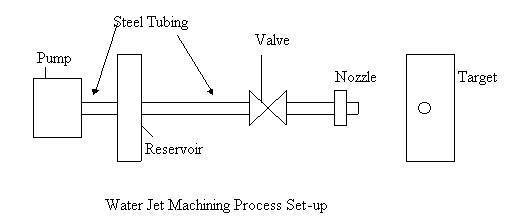
Water Jet
Machining
At
first thought, the idea of cutting a metal sheet with water doesn't seem
practical. A very common experience which we have in our daily life is that if
we place a finger over the outlet of a water pipe and allow the water to rush
out only through a small opening then the water streams out with high energy and
is able to wash surfaces by removing particles. Same principle is used in water
jet machining.
If a jet of water is directed at a target such that on striking the surface the high velocity of flow is virtually dropped to zero then most of the kinetic energy of water jet is converted into pressure energy. The water traveling through a nozzle of reduced cross sectional area causes the water particles to rapidly accelerate. This accelerated stream leaving the nozzle impacts on the material to be cut. The extreme pressure created due to impact of water acts on a small area and the effective cutting force is very large. As result, cracks develop on the impacted area and the cracks propagate as water jet washes away the material that erodes away from surface of work piece exposing new surface to the water jet.

A high-pressure water pump (source) and
a nozzle to form a jet are essential part of the WJM set up.
Pump pressurizes water to a pressure of 1500 – 4000Mpa. Thick stainless
tubes are used to withstand high pressure. The ratio of outside to inside
diameter of such tubes is 5 – 10. A
needle valve is used to control the flow of high-pressure water. Function of
nozzle is to convert high- pressure liquid into high – velocity liquid. Hard
materials like diamond, tungsten carbide and steel are used to make nozzle.
Applications
of Water Jet Machining:
Process is economical. Low strength materials like wood, plastics and aluminium can be machined easily. Abrasives embedded in the water jet can be used to machine stronger materials like steel. Other applications are : Cutting printed circuit boards and Cutting food materials.
Advantages
of WJM:
Disadvantages
of WJM:
1. The process can be economically used for cutting a limited number of materials.
2. Thick parts cannot be cut by WJM with dimensional accuracy.
3. Flaring up of water jet is quite possible in water jet machining process which produces tapered surfaces.